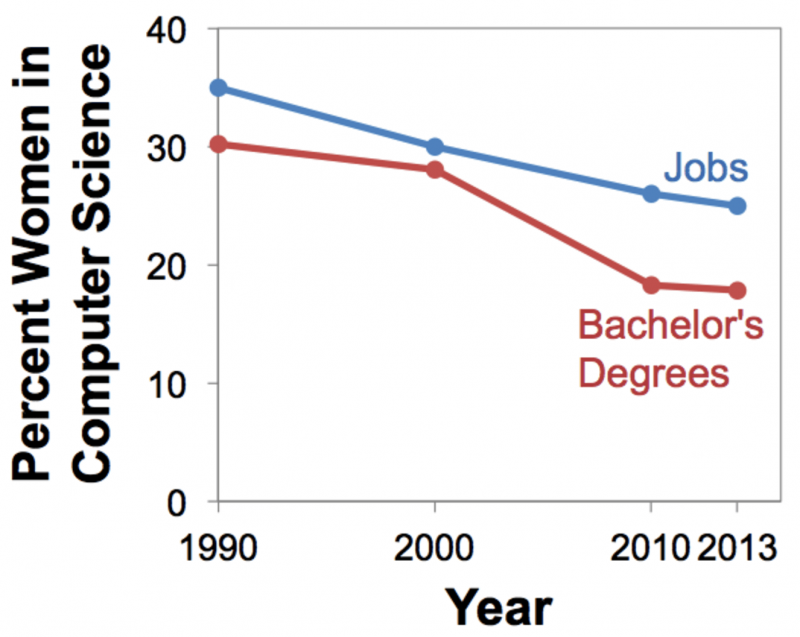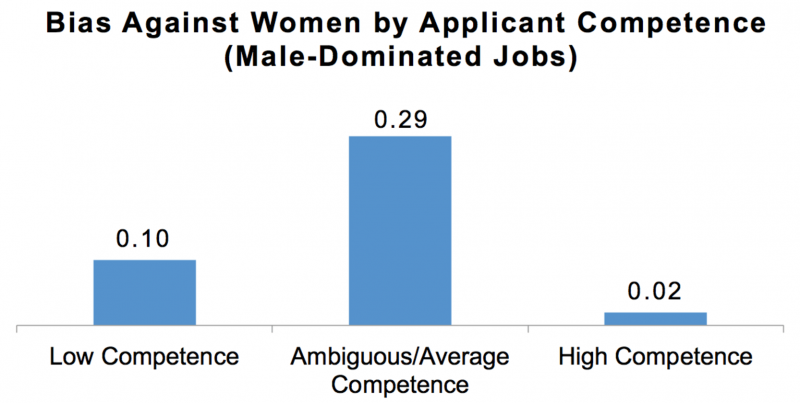Tech companies spend big money on bias training—but it hasn't improved diversity numbers

Facebook recently redoubled its efforts on bias training when its diversity numbers from last year, now at 16% female, 3% Hispanic and 1% black among its tech workers. The company its Managing Bias course to be "harder hitting" and is "rolling it out to our teams across the world."
This kind of training typically tries to increase diversity by creating an inclusive workplace that hires, retains and promotes minorities. Common activities include lectures and group discussions on how biases about gender, race and other categories can shape our everyday decisions.
During a this month in Brussels held by the nongovernmental organization Public Policy Exchange, many panelists echoed the call for bias training. The push for action makes sense. Find evidence of workplace bias? Train it away.
There's just one problem: bias training usually . Raising awareness of bias can . When designed well, training can be one useful tool among such as assigning responsibility for diversity to special managers and task forces. But companies often on poorly designed training.
Bias training usually doesn't work
Bias training isn't cheap. A one-day course for 50 people costs an average of US$2,000 to $6,000, , who founded the diversity consulting firm Cook Ross Inc. It also takes time from employees' jobs.
Tech companies say the resources are well-spent because bias can threaten business when it's reflected in the products they produce. A group of mostly male engineers, for instance, to adult male bodies, "resulting in avoidable deaths for women and children."
Only if people who use technology also create it can we "get the kind of innovation that we need to solve problems," , Google's vice president of people operations. In 2015 alone, Google will on its diversity initiatives, which include bias training.
Training is the most popular initiative to increase workplace diversity, according to over 31 years. Four in 10 companies offered bias training in 2002. Yet training had "no positive effects in the average workplace," .
Diversity efforts have been especially futile in the tech sector. The percentage of women among US tech workers over the past two decades, for instance, now standing at 26%. "We're going backwards in a field that's supposed to be all about going forward," said Democratic presidential candidate Hillary Clinton in .
Training programs often fail because they don't use evidence on what actually works. They can backfire when "they place pressure or blame on attendees," argued in Science. The review paper recommended four elements for designing effective training, including framing diversity as a shared community challenge and using active learning exercises, not just lectures.
When such design elements are used, training can promote inclusive behaviors among managers, according to at an engineering company. But the current evidence is thin.
"I hope that in 10 years we will have some theory-driven, solid, validated programs for prejudice reduction," , lead author of the Science paper and assistant professor of psychology at Skidmore College. "I don't think we are there yet."
Collecting and using data is key
Before launching a new product, tech companies will test how it works under many conditions and collect lots of data. Launching bias training should be the same.
As a core part of its diversity strategy, Google collects data on where bias exists and how to change it, , Google's director of people analytics.
Welle's team, for instance, noticed that women software engineers were nominating themselves for promotion at lower rates than men. So a senior manager sent an email to all junior engineers describing the data and nudging women to apply. That simple, targeted action worked. Women's self-nomination rates soared, also .
The promotion example is a small success. Like Facebook, Google's diversity numbers from last year, now at 18% female, 2% Hispanic and 1% black among tech workers. But experimenting with targeted actions and monitoring the outcomes is a step in .
Without data, organizations may try to solve problems that are already fixed. The hiring of science and engineering tenure-track faculty actually , for instance, contrary to about pervasive bias against women. Though , the results .
The simple truth is that bias varies greatly across contexts. Biases in situations where applicants' competence is more mixed, for instance. Companies should use such findings to target where action is needed.
Combining research and action
At last week's summit in Brussels, some panelists questioned whether more research is needed to end gender bias. Research has already documented bias, some argued. We need action plans instead, not more research.

But the choice between research and action is a false dichotomy. Research is needed to identify what actions will be effective. Some diversity consulting firms only have testimonials, not rigorous evidence, to show that their programs work. Companies should not hire such firms.
Every action plan for diversity should include monitoring data on what works and where further action is needed. When something does work, tell the world – . Only by combining research and action can we expect to debug tech's diversity problem.
Source: The Conversation
This story is published courtesy of (under Creative Commons-Attribution/No derivatives).
![]()
















